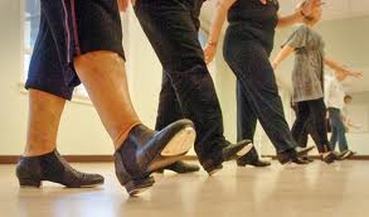The History of Tap Dancing
Tap dance is a form of dance that is made from your feet hitting ground using shoes that have metal taps under the toe and heel. Over the years, tap dancing has changed tremendously. Tap dance goes back in time to Africa when they would spiritually dance by moving in a circle, clapping their hands, stomping their feet, and patting their bodies to the rhythm the drums were playing. It then transferred to America when the salves hit. The slaves developed this dance by also making sounds from their feet and hands. After this, the plantation masters made clogs, a type of shoe used for 'clogging' in Irish dance. This type of dance is danced keeping the upper body almost motionless, letting the lower body do all the dancing ("Buzzle.com"). Tap continued to grow in theater in the 1800s, in the form of minstrel shows, where different immigrants would gather and show off their skills ("Dance Tutors").
Tap become very popular in the 1900s. Dancers such as Gene Kelly, Fred Astaire, Eleanor Powell, Shirley Temple, and Bill "Bojangles" Robinson were a major hit in America. Many dancers, including these, used the "challenge" format in their dances. This means they battle another dancer back and forth to show off their individual skills and tricks ("Essortment").
(See below the video of Temple & Robinson)
Movies began to use tap dancing to express happiness. Famous movies of this time include, "Brigadoon," "An American in Paris," "Pennies From Heaven," "All That Jazz," and "Hooray For Love ("Essortment")." During this time, tap dancing hit its peek and was famous for it's large entertainment. Also during this time, the most famous tap dancing steps emerged and are still used today: the shuffle, ball change, brush, side tap, heel, toe, flap ("Essortment"). These simple steps are then used to make a more complex step in today's tap dancing.
After the 1940s, tap dancing underwent a downfall. It lost popularity and interest from all people. It became a controversial issue for African Americans. Mainly because tap dancing was meant to mock early slaves. Americans would protest how popular tap dancing was and was not relevant to black slavery ("Essortment"). It wasn't until several dance companies began to form at the college level, mostly ladies, to draw tap dancing to the young audience. At this time, the musical, 42nd Street found Broadway a huge success. This started to get tap dance back on track, but it wasn't until the late 1980s that the film "Tap" helped the dance come back to popularity. The actor and dancer, Gregory Hines, wowed the audience with his tap and got the public back in excitement for tap dancing ("Buzzle.com"). Tap has been a huge success since this time, and there is no turning back.
(See below is a picture of women dancing in 42nd Street)
Today, tap dancing is a still a major part of dance. Younger children are beginning earlier and are eager to learn how to tap dance with a new style and new expression. The style of tap is growing, with new steps and styles being used. Tap dance is also seen in many movies, television shows, and on Broadway in many large cities as major productions. Although tap dance is not very popular in other parts of the world, in America, tap has become a large form of dance ("Buzzle.com").
Tap Dancing & Myself



